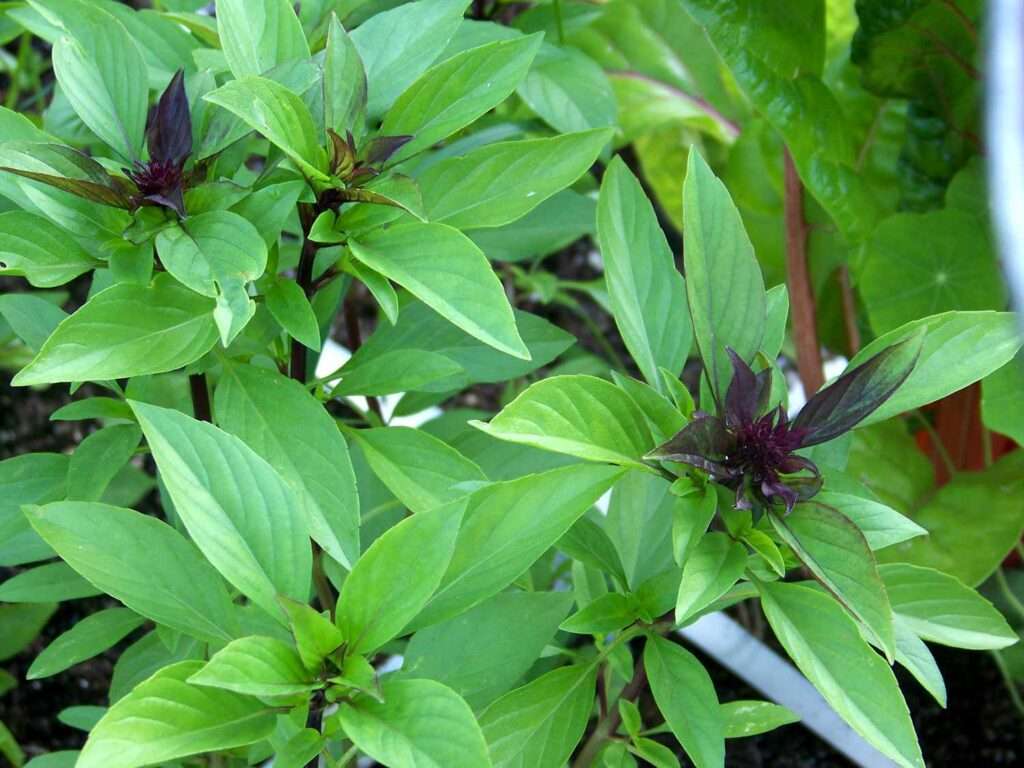
Description
Common names for it include anise basil, licorice basil, and chi neang vorng, according to some chefs and gardeners. Compared to most sweet basil cultivars, the plant is a little smaller and has smaller leaves. The plants look great in ornamental gardens because of their purple stems and flowers. The flowers look beautiful in bouquets and make lovely garnishes.
Thai basil is a heat-loving plant that is particularly vulnerable to frost damage, just as other basils. Plants and seeds should not be planted until the weather has settled and the soil is warm, between 65 and 70 degrees Fahrenheit. The plant’s growth will be slowed for a while after even a 50 degree night.
Habitat
Thai basil is native to Southeast Asia and is frequently used in local cuisines there.
Uses
Thai basil is a nutrient rich herb as well as delicious. Its unique flavor and fragrance have been employed for centuries in traditional medicine. Thai basil is a great addition to any diet because of its high antioxidant content as well as its antiviral, antibacterial, and antifungal traits according to research.

Varieties
Thai basil comes in a number of varieties, including:
Siam Queen’ (Ocimum basilicum ‘Siam Queen’): This cultivar has received several awards and is known for its delicate, intensely fragrant leaves that hold their aroma longer than other varieties when cooked at higher temperatures.
The ‘Queenette’ (Ocimum basilicum): This Thai basil cultivar grows compact, with long purple stems, and rather beautiful blooms. It is ideal for both culinary and ornamental purposes.
Ocimum basilicum ‘Thai Magic’: This cultivar has dark magenta flower clusters that contrast sharply with bright green foliage, and it has a mildly sweet flavor.
Plant Care
- Light
The optimal growing conditions for Thai basil plants are areas with at least six hours of direct sunlight every day. The plant enjoys half sun in extremely hot regions; choose a location that receives morning sun and afternoon shade to protect it from the heat.
- Soil
Plant Thai basil in nutrient-rich, moisture-retaining soil that drains properly. A few weeks prior to planting, incorporate organic compost into the soil; if grown in containers, mix one part compost to two parts potting mix.
- Water
When it’s not raining, give your Thai basil plant frequent irrigations to keep the soil consistently moist. To assist retain soil moisture, think about covering the soil surrounding the plants with an organic mulch, such as hay or straw.
- Temperature and Humidity
The warm, humid climate of its home land is what Thai basil prefers. To plant seeds or start outside, wait until daytime highs are regularly above 70 degrees and nighttime lows are above 50 degrees. The growth of the plant may be hampered by temperatures below 50 degrees. Harvest Thai basil later in the season before night temperatures drop below 40 degrees, as this can cause damage to the leaves.
- Fertilizer
Thai basil doesn’t need fertilizer if planted in good soil. During the summer, feed the plant every few weeks with a balanced fertilizer if you want to encourage faster growth. This is especially useful if you want to harvest frequently or pinch back plants to encourage development.
Table





